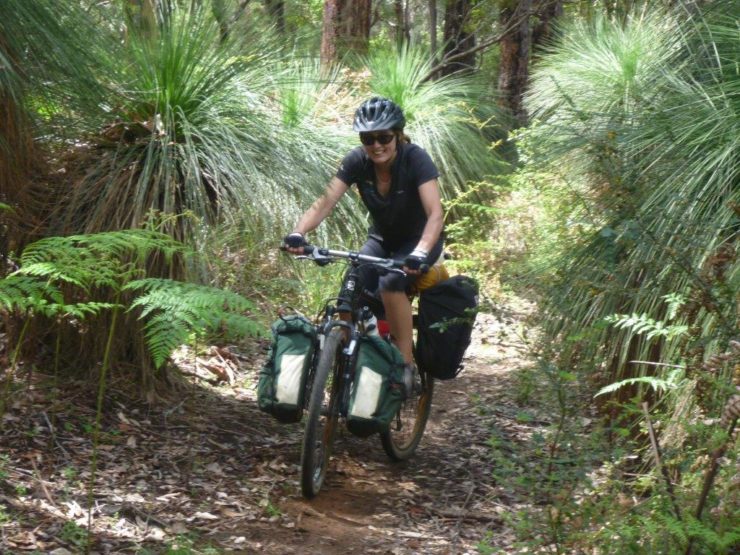Mountain Bike Gear for Beginners

Mountain Bike Gear for Beginners
Posted on
Mountain Biking is a sport that can be as expensive or as cheap as you want it to be. You can spend thousands on a new top of the line bike or find yourself a great deal for a second hand one off Gumtree. You can spend huge amounts of money driving to the best trails around the country or you can simply use the bike to explore your local area for free. Whatever your budget, mountain biking is an accessible sport but there are a few essentials to purchase before getting started.
Helmet –
After the bike a helmet is probably going to be the next most expensive item. And it’s worth it. Helmets have saved me and many others from brain injuries, head trauma and death. When buying a helmet choose one that’s compliant with the Australian Standard (AS/NZS 2063) and disregard all others no matter how pretty or cool they might look.
A good bike shop will only stock approved helmets allowing you to then choose colour and style. The helmet should fit snugly, and it shouldn’t move when you tilt or shake your head. Look for helmets with extra vents as these will increase air circulation to your head and keep you cooler.
Personally, I replace my helmets after every significant fall (which thankfully isn’t that often) as once helmets have protected once they are usually less effective at preventing injury again.
Clothes –
Padded shorts will keep you more comfortable on long rides and are more important than any other item of clothing you will wear. There are lots of different styles out there, from body-hugging Lycra to the typical mountain biking “shy shorts” but remember, a bit of padding can go a long way. Padded shorts feel odd when you first try on a pair but once you’ve sat in the saddle for any length of time they suddenly become your new best friend.
T-shirts are fine to wear mountain biking and help keep the cost of investing in a new sport down however some people decide to purchase a riding specific top. These tops usually fit better when bent over the handlebars (they are longer at the back preventing skin exposure when you’re hunched) and help draw moisture away from your body.
A waterproof jacket in case the weather changes may also come in handy. Look for one that has some reflective tape on it to increase your visibility in low light.
If you have clipless pedals, you’ll need shoes that fit into your pedals’ cleats. They should be comfortable, durable and have a hard sole to help you pedal more efficiently. Wear thick cycling socks to prevent blisters.
Knee and elbow pads will help protect you against injury if you fall but are not usually necessary for your average weekend rider.
Gloves –
A pair of good quality gloves can greatly reduce the blisters that friction can cause and offer your palms some padding. They also help prevent injury from scraped palms if you crash and stop scratches from tight squeezes through overgrown bush. There are a lot of choices when it comes to gloves. Long-finger, short-finger, padded, no pad…the list goes on so be sure to find a pair that works for you.
Eyewear –
Next to the helmet, eyewear—sunglasses or clear lens glasses—are the most important piece of safety gear when riding a bicycle. You will encounter tree branches, dust, bugs and bright light while out on the trail and getting slapped in the face by a tree branch or having a bug fly into your eye will naturally make you shut your eyes causing you to crash. I personally use my normal sunglasses when riding however some riders like to change lenses depending on conditions. Tinted for bright light situations. Yellow or amber for low light situations. And sometimes clear. The choice is yours.
Water –
Water is a must-have so you don’t get dehydrated. Make sure you take a drink every 20 minutes or so, even if you aren’t thirsty. If you don’t want to continually pick up a bottle while you ride or stop to drink, get a backpack-mounted system. These allow you to carry more water and have the added bonus of giving you somewhere to store your snacks, phone, first aid and repair kit.
Repair Kit –
Simple bicycle repair is a skill that all riders must learn when not on an organised riding tour. You don’t need to carry an entire shop in your gear pack or seat pack, but carrying the following items will give you peace of mind and not leave you walking back home: spare tube, patch kit, small pump, tire levers and a multi-tool that includes a chain tool.
If you don’t know how to fix a flat tire, learn from someone (or watch Youtube) and then practice.
If I’m riding alone for long periods (such as when I rode the Munda Biddi end to end) I’ll always include duct tape and cable ties in my repair kit. While neither of these things will fix a bike it does allow you to think creatively and hopefully get back to safety before dark.
Mountain biking is a sport that beginners can become proficient at quickly, and it’s a sport that provides on going enjoyment and opportunities to improve for years to come – if you have the right gear.



